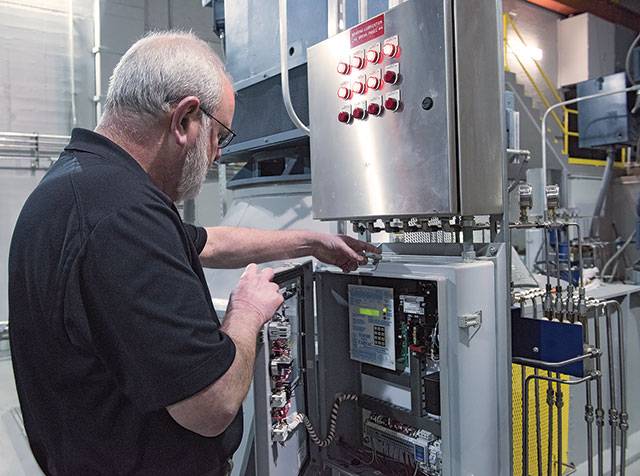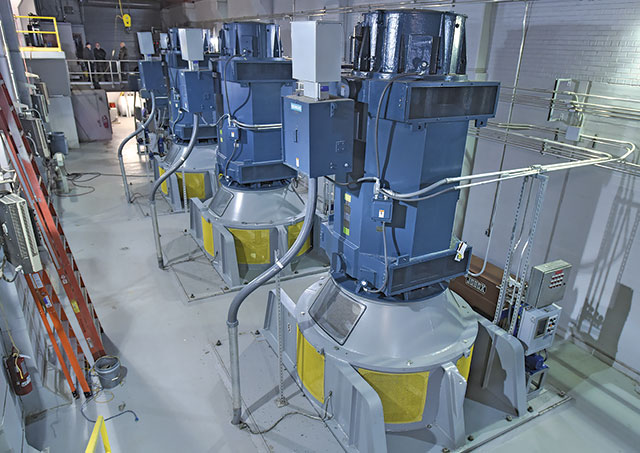Pump reliability can sometimes be life or death. That is true for Louisville, Kentucky, a city of 1.2 million people that is located at the widest and deepest point of the flood-prone Ohio River. The city is haunted by memories of a 1937 flood that put 70 percent of the community under water, causing $250 million in damage ($3.3 billion in today’s dollars) and leaving nine dead in the state of Kentucky. Since then, the state has seen several other major floods. To prevent future disasters, the U.S. Army Corps of Engineers (Corps) decided in the early 1950s to build a series of flood control stations in the region. One of these, the Western Flood Pumping Station, was completed in 1952 and equipped with seven massive vertical pumps. The station protects about 138,000 residents against flooding.
 Image 1. Jeff Lukemeyer at one of the control stations for the pumps. (Courtesy of Grundfos)
Image 1. Jeff Lukemeyer at one of the control stations for the pumps. (Courtesy of Grundfos) Image 2. Inside the flood control station for the Louisville, Kentucky, Metropolitan Sewer District (MSD) showing the pumps installed.
Image 2. Inside the flood control station for the Louisville, Kentucky, Metropolitan Sewer District (MSD) showing the pumps installed.
